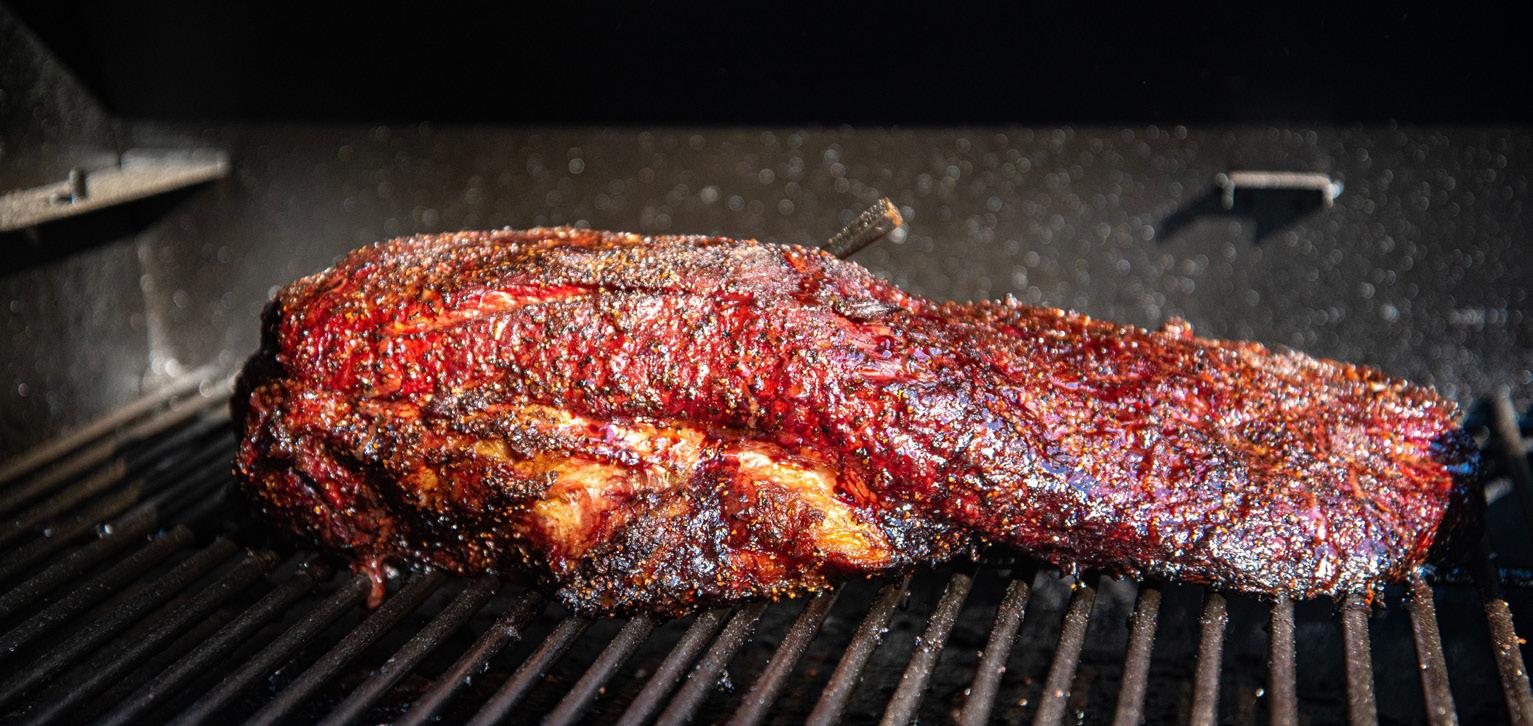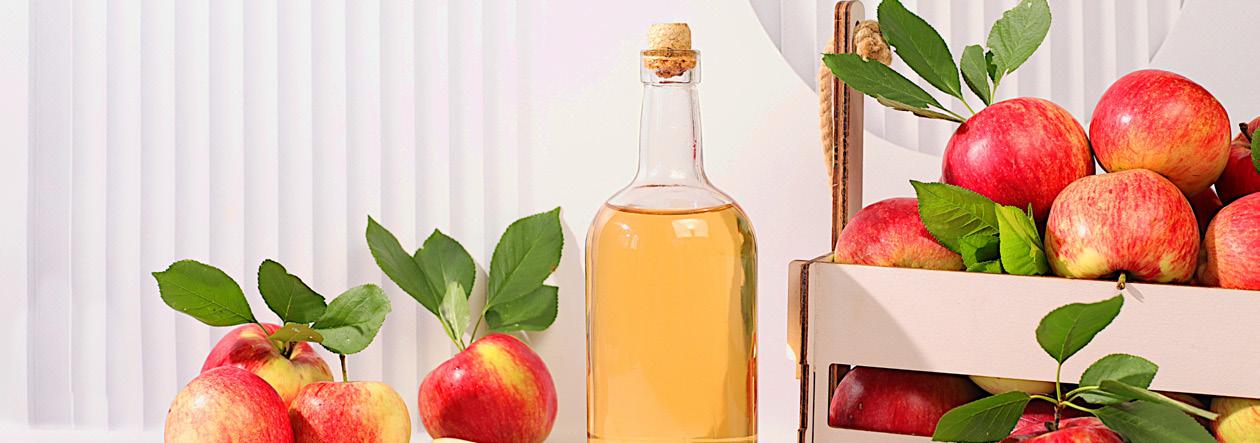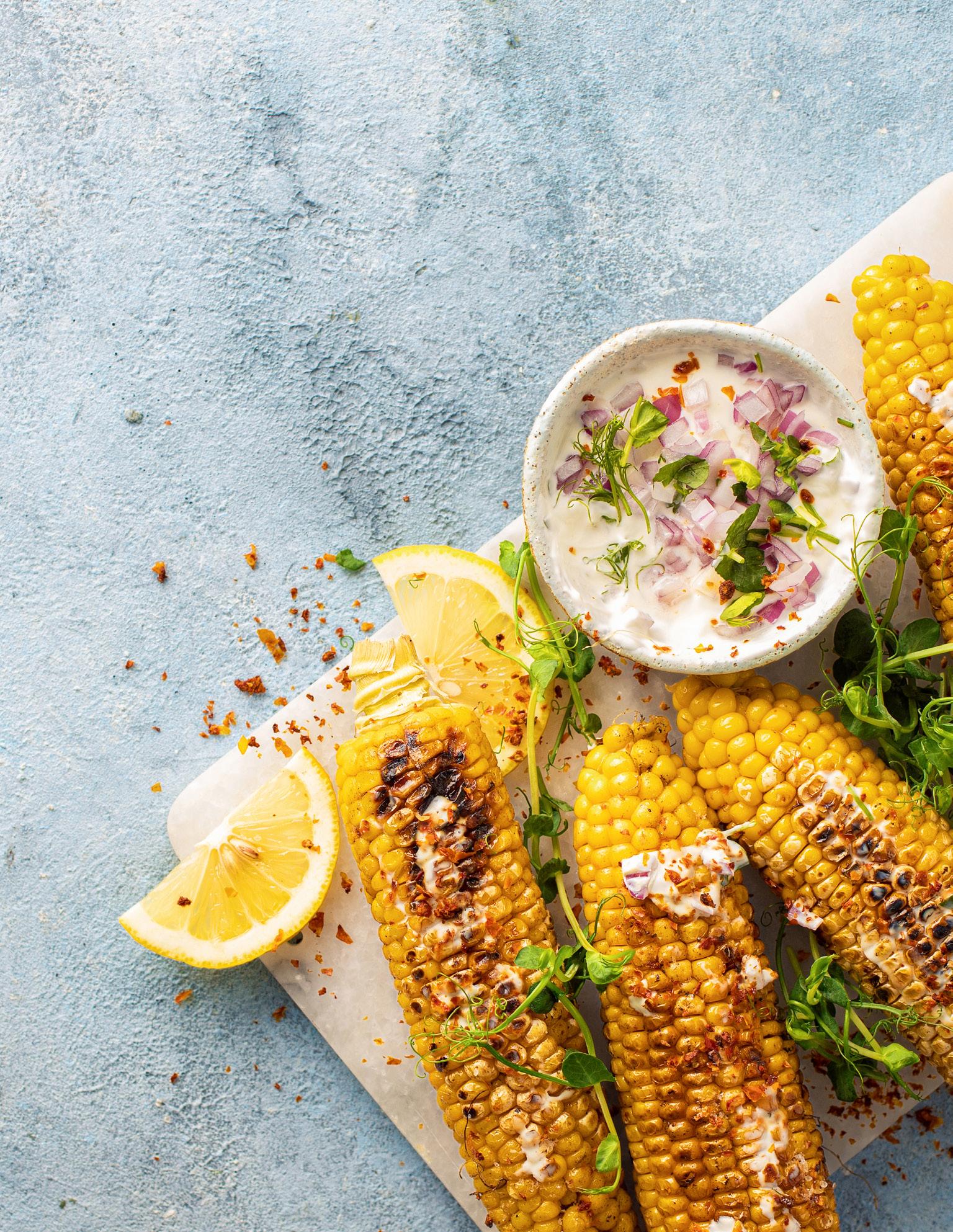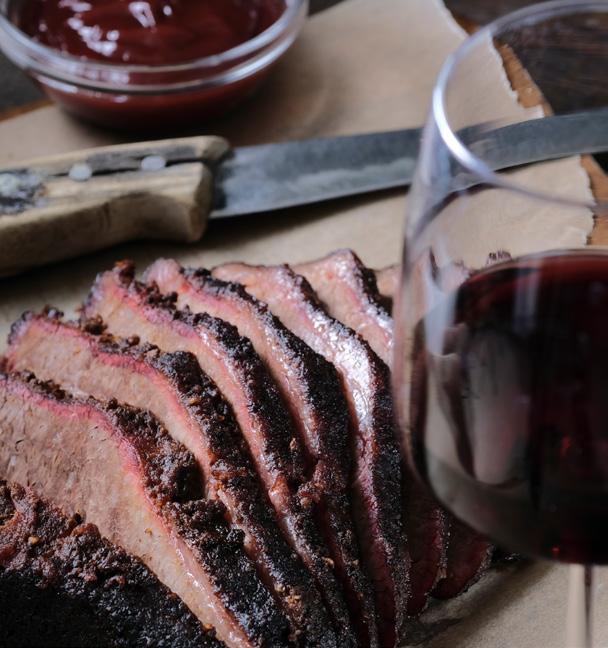Cooking & Cocktails
SERIES
Smoke and Barrels



WITH PATRICK SCULLY, YOUR NATIONAL DIRECTOR OF FOOD, BEVERAGE & CULINARY EXPERIENCE





WITH PATRICK SCULLY, YOUR NATIONAL DIRECTOR OF FOOD, BEVERAGE & CULINARY EXPERIENCE

Barbecue (BBQ) has deep roots across many cultures, evolving over centuries through the influence of geography, culture, and technology. Here’s an overview of its development through time.
» Indigenous Beginnings: The origins of BBQ trace back to indigenous peoples of the Americas, who cooked meat over an open fire or in pits. Native Americans used methods like pit roasting, where meat was buried in hot coals, or slow-cooked on wooden racks. These methods are closely linked to the natural resources available in the environment.
» European Exploration: When Europeans arrived in the Americas, they adopted and modified the barbacoa methods they encountered. The Spanish introduced pigs to the Caribbean and southern U.S., which became integral to the BBQ tradition. Barbecue as a technique spread as European settlers adapted it to their own cooking styles.
» The Slow-Cooking Method: In the 17th and 18th
» The Caribbean Influence: The word “barbecue” comes from the Spanish word barbacoa, which itself derives from the Taíno people of the Caribbean. The Taíno used a wooden framework to slow-cook meat over an open flame or in a pit, a practice they introduced to European colonizers.
centuries, colonial settlers continued to cook meat over fires or in pits, where it could be cooked for hours. This slow-cooking method made meat tender, and over time, BBQ became associated with communal gatherings, celebrations, and feasts.
» Barbecue in the U.S. South: BBQ became central to Southern culture by the 19th century, especially in states like North Carolina, Texas, and Tennessee. The term “BBQ” evolved into a style of cooking that varied from region to region, depending on the meat used (pork, beef, chicken) and the seasoning or sauce (vinegar-based in the Carolinas, tomato-based in Memphis, and mustard-based in South Carolina).
» African-American Influence: Enslaved Africans played a significant role in shaping BBQ culture. Many brought with them techniques like pit cooking and a mastery of seasoning and smoking meat. Their influence transformed BBQ into an art form with distinct regional styles, particularly in the Southern U.S.
» Industrialization and Urbanization: As the U.S. became more industrialized, BBQ moved from small, family-run establishments and large communal gatherings to commercial BBQ joints and roadside stands. BBQ became a part of American cuisine, celebrated at events like cookouts and festivals.
» BBQ Restaurants: The 20th century saw the rise of BBQ restaurants, many of which became iconic. Some, like Franklin Barbecue in Texas, became world-renowned for brisket and other smoked meats.
» Regional Styles: In the 20th century, various regions of the U.S. developed distinct BBQ styles. For example:
• Texas: Known for beef, particularly brisket, and a dry rub with minimal sauce.
• North Carolina: Famous for its vinegar-based sauces and slow-cooked pork.
• Kansas City: Known for a sweeter tomatobased sauce and a variety of meats.
• Memphis: Recognized for its dry-rubbed ribs, often served with or without sauce.
» BBQ as a Global Phenomenon: Today, BBQ has spread worldwide, with countries like Australia, South Korea, and South Africa developing their own variations of the cooking method. In South Korea, for instance, gogi-gui (Korean BBQ) involves grilling meats at the table, while in South Africa, braai is a communal outdoor cooking event.
» BBQ Competitions: Modern BBQ is also celebrated in competitive events like the Memphis in May World Championship Barbecue Cooking Contest or the Kansas City BBQ Society competitions. These events attract enthusiasts from around the globe who compete in various categories, from ribs to brisket.
» Commercial BBQ Tools and Technology: The 21st century has also seen innovations in BBQ equipment, including high-tech smokers, electric grills, and pellet grills, making the art of slow-cooking meats more accessible to the general public.
» Texas BBQ: Emphasizes beef, especially brisket, cooked over mesquite or oak wood. The seasoning is typically a dry rub with minimal or no sauce.
» Carolina BBQ: Famous for whole-hog BBQ, with a vinegar-based sauce. North Carolina is known for both Eastern and Western styles, where the whole hog is used, and the sauce is often vinegar-based.
» Memphis BBQ: Known for dry-rubbed ribs and pork, served either “wet” with sauce or “dry” without.
» Kansas City BBQ: Famous for its sweet tomatobased sauce and a wide variety of meats, including ribs, burnt ends, and pulled pork.
Barbecue’s history reflects cultural exchange, innovation, and a love of communal cooking. It continues to evolve today, blending traditional techniques with modern technology, while remaining an enduring symbol of community, flavor, and heritage. From its indigenous roots to its place in contemporary cuisine, BBQ is a beloved and integral part of global food culture.

Brisket is a cut of meat that comes from the lower chest or breast of a cow. It’s a tough, flavorful piece of meat that requires slow cooking methods like braising, smoking, or slow roasting to break down its connective tissues and become tender. Brisket is popular in many cuisines, especially in barbecue, where it’s often smoked for several hours, and in dishes like pot roast or corned beef. The meat typically has a lot of marbling (fat within the muscle), which helps keep it moist and flavorful during cooking.
TOOLS TO COOK A BRISKET
To BBQ a brisket, you’ll need a few essential tools to ensure it’s cooked properly and comes out delicious. Here’s a list of tools you might need:
1. Smoker or Grill
Smoker: A dedicated smoker (e.g., offset smoker, pellet smoker, or vertical smoker) allows for slow, indirect cooking, which is ideal for brisket.
Grill: If you’re using a grill, you’ll need to set it up for indirect cooking (using a two-zone fire setup) or use a charcoal or gas smoker box to add smoke.
2. Charcoal or Wood Chips
For smoking, you’ll need charcoal (if using a charcoal grill or smoker) and wood chips or chunks (like hickory, oak, or mesquite) to impart flavor to the brisket.
3. Meat Thermometer
A meat thermometer (preferably a probe thermometer) helps you monitor the internal temperature of the brisket. Ideal doneness is around 195°F to 205°F for tender, sliceable brisket.
Patrick’s Favorite: Amazon.com - MEATER | The Original True Wireless Smart Meat Thermometer for the Oven Grill Kitchen BBQ Smoker Rotisserie with Bluetooth and WiFi Digital Connectivity
4. BBQ Rub and Marinade
A good BBQ rub (dry seasoning) enhances the flavor of the brisket, and some people like to use a marinade or injection to add moisture and flavor.
5. Basting Brush or Mop
A basting brush or mop is used to apply any liquid (like broth, vinegar, or barbecue sauce) to keep the brisket moist during cooking.

Spraying brisket or other proteins with apple cider vinegar (ACV) during BBQ serves a few purposes, mainly to enhance flavor and texture.
Keeps Meat Moist: Smoking meats like brisket can be a long process, and over time, they can dry out due to the low and slow cooking. Spraying with apple cider vinegar helps keep the surface moist, which helps retain the internal moisture of the meat.
Creates a Crispy Bark: The vinegar helps form a crispy, flavorful crust (called the bark) on the outside of the meat, which is a key feature in BBQ. This is especially important for slow-smoked meats like brisket, where you want that crunchy texture combined with tender, juicy meat inside.
Adds a Tangy Zing: ACV imparts a subtle tanginess to the meat without overpowering the flavor. The acidity can help balance the richness of the meat, cutting through the fattiness and adding a slight contrast to the deep, smoky flavors.
Enhances Rubs: When sprayed, ACV helps the rub or
seasoning stick to the meat better. It acts as a binder, allowing the spices to form a better crust.
Acidic Nature: The acidity of apple cider vinegar can help tenderize the meat slightly over time, especially if it’s a tough cut like brisket. It breaks down proteins and connective tissues, making the final product more tender.
Promotes Smoke Absorption: The moisture on the surface of the meat helps the smoke adhere to it more effectively, improving the smoky flavor that develops over the long smoking process.
Typically, people spray the brisket every 30-60 minutes after the first couple of hours of smoking. You don’t want to open the smoker too often, but periodic spraying helps maintain moisture without letting the meat dry out.
Apple cider vinegar is a great tool to help keep your brisket (or other meats) moist, tender, flavorful, and with a nice, crispy bark! It’s an easy and effective way to level up your BBQ game.

» Coleslaw
» Corn on the Cob
» Potato Salad
» Baked Beans
» Macaroni and Cheese
» Grilled Vegetables
» Cornbread
» Pickles
» Grilled Pineapple
» Cucumber Salad
» French Fries or Potato Wedges
» Tomato and Onion Salad
» Sweet Potato Fries
» Deviled Eggs
» Sliders or Mini Sandwiches
» Chips and Dip
» Fried Green Tomatoes
» Grilled Garlic Bread
» Hush puppies
» Fruit Salad
» The Probe Test: Beyond temperature, use the “probe test” — when the thermometer slides in like butter, it’s done. It’s a great way to tell if your brisket is tender.
» Wrapping: Once the brisket reaches around 160170°F (71-77°C), it can start to stall (where the internal temperature stops rising). To help it push through the stall, you can wrap it in butcher paper (to keep the bark crispy) or foil (to help retain moisture).
» Resting: After cooking, let the brisket rest, ideally for 1-2 hours, before slicing. This helps redistribute the juices.
» Wood Choice: If smoking, the type of wood you use affects the flavor. Oak, hickory, or mesquite are classic choices for brisket. If you prefer a milder smoke, try fruit woods like apple or cherry.
» Avoid Over-Smoking: You don’t need a huge amount of smoke. Too much can turn the brisket bitter. Keep a balance!
» Trim the Fat: Leave about a quarter-inch of fat cap on the brisket. Too much fat can cause flare-ups on the grill, and too little can dry out the meat. Aim for an even balance that will baste the meat as it cooks.
» Resting Time: After cooking, allow your brisket to rest for at least 30 minutes, preferably up to an hour or more, before slicing. This helps the juices redistribute, keeping the meat moist.
» Slicing Properly: Always slice the brisket against the grain for tender, bite-sized pieces. If you slice with the grain, the meat can be tough and stringy.
EXPERIMENT WITH SAUCES AND ACCOMPANIMENTS
» Sauces: While some like to serve brisket plain with just the rub flavor, others love a good BBQ sauce on the side. A tangy vinegar-based sauce or a classic
tomato-based one can complement the smokiness.
» Side Dishes: Brisket pairs well with cornbread, coleslaw, pickles, and roasted vegetables. Get creative with your sides!
» Dry Rub Recipe: Brisket Rub Recipe - Dinner at the Zoo
» BBQ Sauce Recipe: 15 Minute Homemade Bourbon BBQ Sauce
» Jalapeno Corn Bread Recipe: Honey Jalapeno Cornbread Muffins - Baker by Nature
» Coleslaw Recipe: The Best Coleslaw RecipeSpend with Pennies (add Green Apples and Lemon Juice as a variation to make a green apple slaw)
» Shiraz/Syrah: A full-bodied red like Shiraz (or Syrah) with a smoky, peppery profile matches well with the strong flavors of smoked brisket. It enhances the smoky, charred taste of the meat and balances out the richness.
» Malbec: This is another excellent match for smoked meats, thanks to its deep fruitiness and slightly smoky flavor.


» 1 ½ ounces bourbon
» ½ ounce coffee liqueur
» ¼ ounce maple syrup
» 1 ounce cold brew
» 2 dashes walnut bitters
» Coffee beans (for garnish)
» Combine bourbon, coffee liqueur, maple syrup, cold brew, and walnut bitters in a mixing glass filled with ice. Stir until combined.
» Strain into a rocks glass over an ice cube. Garnish with coffee beans.